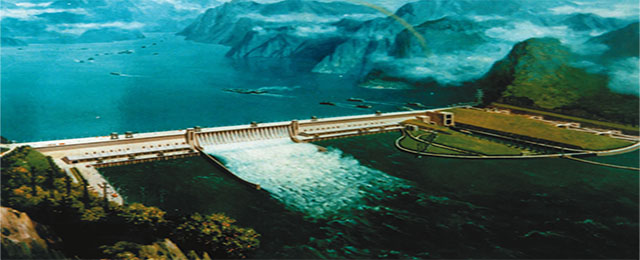This $1Tr gap is almost as big as South Korea’s GDP. What is much worse, the breach has not been corrected for ages and is not likely to reduce. Today’s America’s public infrastructure spending is at a 20-year low with investment needs of $2.7 trillion by 2020. Specifically, US projects investment needs by 2006 were already estimated to be $1.6 Tr for the five following years—an amount equivalent to Italy’s GDP in 2004.
The situation in the EU is not much different. The European Commission reckoned that infrastructure investment needs in the region amount at least to €1 Tr by 2020 -€500 bn transport, €200 bn energy, €270 bn fast broadband infrastructure-. They may be too many figures and too bulky, and make one feel dizzy.
“There is a problem on how to globally understand investments on infrastructures as a response to an obsolete model that must be renovated in order to be really innovative,” Spanish College of Civil Engineers chairman Juan A. Santamera explained.
“Developing targeted infrastructures remains crucial for any nation to progress. These generate wealth and employment, structure and bring together the territory by improving communications that save money and time for taxpayers, as well as increase their safety and quality of life while creating a positive and durable effect on the grounds of a competitive model of economy”, Santamera added. These links between a nation competiveness, prosperity and social well-being work like interconnecting pipes o such extent that the Federal Reserve Bank of Chicago estimated that more than half of the decline in labor productivity growth rates in the US during the 70s and early 80s resulted from infrastructure neglect.
The question currently is to discern how to maintain and promote those communicating vessels between people and the roads, ports, railways, airports, power lines, pipes and wires they use in a context where lack of public money is the rule after recession. How to become innovative for closing the global infrastructure gap?
The capacity of advanced economies to spend has fallen strongly as their public debt rose to about 100% in terms of GDP. Just like governments, banks are not in a position anymore to come up with the financing needed for infrastructures since they must focus on fulfilling Basel III’s increased regulatory requirements. Therefore, which for decades was main source for funding civil works is sort of dried out.
Nevertheless, the lack of private capital is not behind the infrastructure global gap. In fact, some investors complained about the shortage of target projects. Why not then to join forces between ailing public finances and thriving private sector? Is the promoting of public-private partnerships (PPP in its English acronym) one of the eventual solution to the problem?
“To increase the sector’s income, we should make profit of that not sufficiently used resource of PPPs,” chairman of world’s largest toll road operator Spanish Abertis recently said. As the public partner would develop the projects planning and norms, the private ally would be responsible for provisions and management. Abertis pointed out to Chile and France as an example of countries betting on public-private partnerships.
“Chile has a wide developed concession model, while France’s Plan de rélance provides short term private investments in exchange of extending concession period”, chairman of Abertis explained.
“In the period between 2007-2012, Spain invested € 35bn in PPP projects, as UK spent €125 bn , with more than 700 projects including schools, hospitals, prisons, houses, roads and water cleaning systems”, Spanish College of Civil Engineers chairman Juan A. Santamera explained.
Infrastructure debt offers an attractive risk-return profile, according to a Generali’s report.
“Not only are ratings more stable than the ones for corporate debt, default rates are also lower. In the investment grade universe, it is 2.35% after ten years for non-financial corporate debt. Furthermore, infrastructure debt is covered by physical assets which offer protection in case of high inflation. Therefore, pushing up project bonds market could mean the second round of solutions for infrastructures global gap.
A relevant number of public project bonds proposals as well as private are coming to the sector. Maybe the most known is the Europe 2020 Project Bond Initiative, currently under a pilot phase. They are likely to be completed by banking financing, but it could be a long-term alternative.
Asian countries will also study how to promote infrastructure bonds, as a means of channeling funds from within the region into much-needed investment in the sector. The World Bank estimates that East Asia Pacific requires some $407 billion of annual investment in infrastructure. Meanwhile, US are to establish an infrastructure bank to provide funds and guarantees for investments in certain infrastructure projects by state and local governments. The initial funding for the bank would be $50 billion.
Spanish contruction company ACS broke the ground of European project bonds by issuing debt linked to a project called Castor. The auction was a success thanks to an overdemand of 10%.
Six out of ten main infrastructure companies in the world are Spanish. They hold contracts valued at € 35 bn. Companies should have something to do in closing that global gap of infrastructures investments.






Be the first to comment on "PPPs to close infrastructure expense gap"